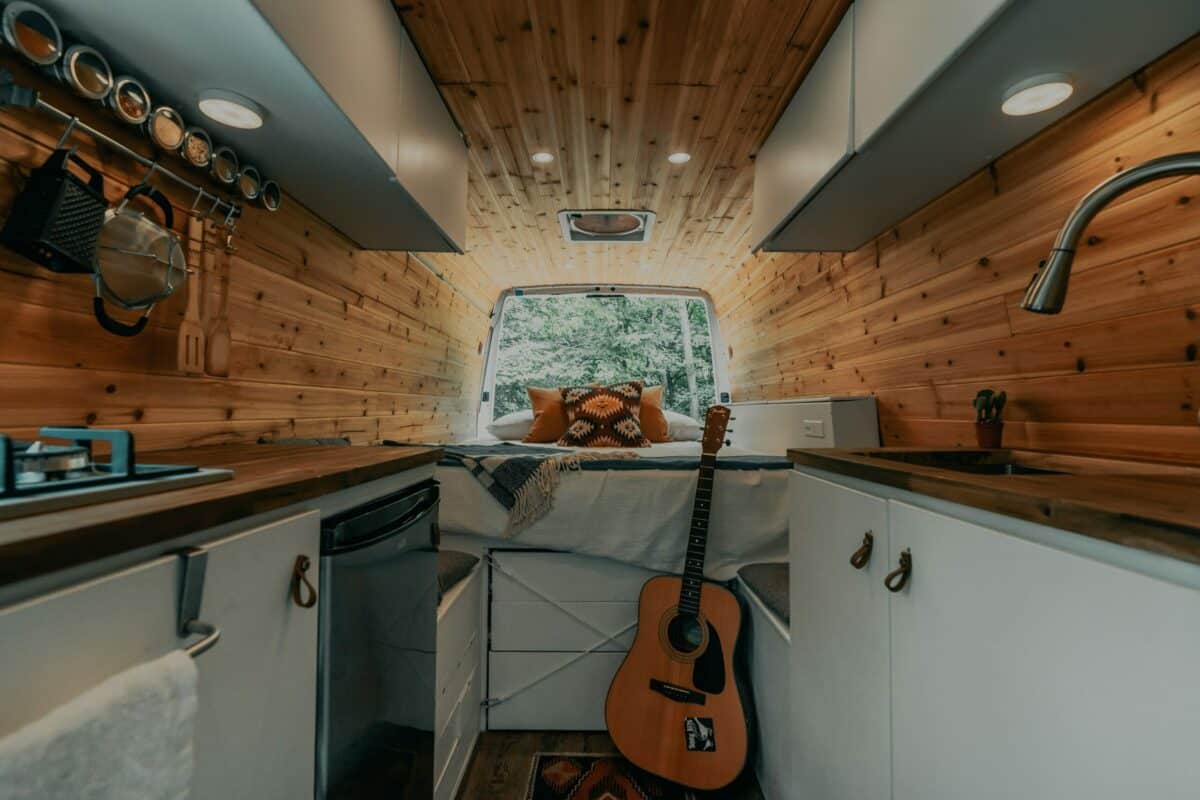10 Alternative Housing Solutions for Canadians Who Want to Avoid Blowing All Their Money on Rent
By Amanda Rogers | Published on 01 Dec 2022

If you can get alternative housing, do it. Mortgage rates are rising and it’s no secret that Canadians across the country have been struggling to make ends meet.
Between inflation‘s effect on food, low wages, and a volatile housing market, many are wondering what they can do to save money. Renters in particular are feeling the pressure, with many facing substantial rent increases and “renovictions”. Below, are 10 alternative housing solutions that could help you save money on housing.
Read about money saving tips
Alternative housing options that require help from others
1. Stay with Family
During the early stages of the pandemic, many Canadians moved back in with their parents. One survey from Finder.com suggests the number of Canadians who moved home to their parents because of the pandemic could be close to 1.5 million.
With housing costs still rising, this trend will likely increase. Living with family or friends should mean your rent will be cheaper, or free. Plus, you won’t have to deal with banks or picky landlords.
There is no shame in living at home. In fact, having many generations in one house is common in many cultures. Aside from saving on your living costs, you have the added benefit of splitting household responsibilities.
2. Government subsidies
If you live on a low income, you may qualify for certain government-subsidized housing initiatives to help defray costs. Subsidies include:
- Affordable public government housin
- Funding to help with rent in private housing
- Assistance for other living costs like hydro.
Many different groups, including families and seniors, live in public housing, so anyone who meets the income specifications can apply.
These vary from province to province, but many subsidies cap your rent at 30% of your monthly income. That means if you make $1500 per month, your rent should be no more than $450.
Unique alternative housing options
3. Tiny homes
Tiny homes have seen a boost in popularity over the last few years. This is thanks to aesthetically pleasing photos on social media and home renovation shows.
People are drawn to the minimalistic tiny home lifestyle, being close to nature, and being rent-free. For some who are unable to afford their dream of building a home, tiny homes may be the answer.
Tiny homes range in size from 60 to 600 square feet, making them very environmentally friendly. You can design and build your own, buy a used home, or even buy a tiny home kit and assembe it yourself.
One crucial factor to be aware of is building codes. Many municipalities have stringent rules about building tiny houses.
It is essential to double-check building regulations to ensure you are allowed to put a tiny home in your proposed spot. There are lots of tiny home enthusiast groups online, so joining one and speaking with others who have gone tiny can help you better understand the process.
Although less costly than most traditional homes, tiny houses still have an upfront investment. The costs are largely due to building supplies and labour, which have risen in price alongside the cost of living.
Some experts say that $40,000 to $80,000 is a realistic budget for building a tiny home, but you could construct a home for less depending on your materials and design. High-tech tiny homes can be even more expensive.
You will also need to find a place to put your tiny house. Land can be expensive, so if you don’t already have a spot, you will need to factor that into your budget. Plus, not every province allows for tiny houses.
With the growing interest in tiny homes, there have been efforts from enthusiasts to start tiny home communities. Many of these community organizers suggest having shared land costs, farms, and other initiatives to help keep costs low and develop communal bonds.
Unfortunately, there is a lot of red tape to work through when building a tiny home. Hopefully, this cost-effective alternative living arrangement will become more accessible in the future.
4. Bus conversions
If you’ve spent any time on social media in the past few years, you have undoubtedly seen “van life” videos showing beautifully designed vans in all sorts of idyllic spots. A van may not be the most practical space to live full-time, but bus conversions are a similar option that provide a lot more living space.
Also called “skoolies” in the community, bus conversions can be left stationary or used to travel around. Turning a school bus into a home can require a significant upfront investment, but that investment may pay off when you don’t have mortgage or rent payments.
Buying the bus can range from $5,000 to $40,000, depending on the vehicle’s condition, size, and whether or not any conversions have been made. Then you will need to install appliances, electrical, plumbing, heating, etc.
If you do-it-yourself (DIY) the conversion, you can save costs on labour, which could range from $26,000 to $40,000. Some companies sell ready-to-live-in skoolies, but these models cost more.
Bus maintenance and repairs can also add up if you need to pay a mechanic for labour. A lot goes into a skoolie conversion, but it may be perfect for those looking for a unique alternative housing solution.
5. Recreational vehicles (RVs)
Recreational vehicles (RVs) are a great alternative if you like the idea of having a home on wheels but remodelling a bus sounds like too much work. Many new RVs come decked out with high-quality furnishings and appliances, but you could cut costs by purchasing an older or used model.
RVs range from smaller truck styles, referred to as “Class C motorhomes”, to the huge classic RV model, called “Class A motorhomes”. New Class A models cost between $125,000 to $500,000, while Class C models range from $100,000 to $200,00.
One downside to RVs is that you also have to factor in vehicle maintenance if you plan to move around. There may be restrictions in your area about living in an RV full-time, especially if you live somewhere with cold winters. These days, most RVs have heaters, but using them full-time could elevate your chances of a fire.
6. Container homes
Container homes are made out of old shipping containers. They offer the benefit of living tiny without needing to build a structure from scratch.
New shipping containers cost about $20,000 each, though you could get a used one for cheaper. Modification costs such as heating, plumbing, doors, etc., will set you back around $65,000.
Prices vary depending on how much work you do yourself, as well as expenses like land purchases. Still, container homes could be an alternative housing solution that is a bit easier than building a home from scratch or converting a vehicle.
7. Living off the grid
Moving out to the woods and living off the grid is another option. Modern amenities are convenient if not luxurious, but costs add up.
Utilities like electricity, water, and heat eat up a huge chunk of living expenses. Water filtration systems, a composting toilet, or other eco-friendly solutions could help you save money in the long run. This alternative housing lifestyle certainly isn’t for everyone, but it may pay off if you enjoy the great outdoors and don’t mind learning new skills.
More common alternative housing options
8. Micro-apartments
Micro-apartments are an excellent option for those looking for a more traditional alternative housing solution. The micro-apartment movement started in Japan in the early 1970s, but has grown to be an alternative housing option across the globe.
Micro-apartments are similar to studio apartments but can be 20% to 30% cheaper. They are typically more space efficient than a studio, as they are specifically designed to use as much available space as possible. Most of these apartments appear in complexes that only have micro units and may include common areas to compensate for the lack of space in the apartment.
9. Fixer-uppers
Some alternative housing solutions come with a significant lifestyle change. Buying a house that needs substantial repairs can help you keep the traditional lifestyle you enjoy.
Home costs vary throughout the country, but according to the Canadian Real Estate Association, the average price of a Canadian home was $816,720 as of March 2022. In order to buy a more affordable house, you will want to look in rural areas away from cities for homes that may not have all the modern amenities of a newer build.
Outdated homes or houses that require significant repairs will be more affordable upfront and allow you to update them slowly over time. Buying a house also means taking out a mortgage, so you will need to compare mortgage providers to see how much interest rates will cost.
10. Manufactured homes
Smaller houses usually mean smaller costs as well. A step up from a tiny house, manufactured homes, also called mobile or mini homes, can give you the traditional feeling of a home with a smaller price tag.
There has been a stigma associated with mini homes in the past, but more and more Canadians are seeing the benefits of buying a manufactured home. Unfortunately, this new popularity has come with higher prices.
The median price of a mobile home in Ottawa, for example, jumped from $75,000 to $160,000 between 2017 and 2021. This alternative housing option may not be as cheap as it once was, but it is still a great option. Consider the extra costs associated with owning a home by comparing mortgage providers and looking into fees related to living in different manufactured home communities.
How to finance alternative housing
If you want to finance a tiny home, skoolie or other alternative housing, you cannot rely on a conventional mortgage. A personal loan, whether from friends, family, goPeer, or other lenders, is one way to finance it. You can use a personal line of credit.
Always remember that loans are not gifts. You have to pay it back plus interest.
